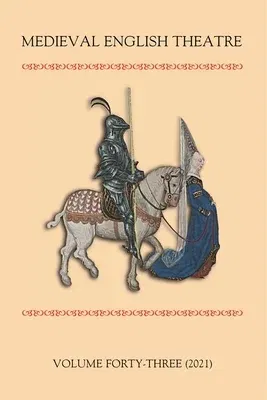The ludic element of drama in the Middle Ages - or drama with early
subject matter - is here to the fore.
Medieval English Theatre is the premier journal in early theatre
studies. Its name belies its wide range of interest: it publishes
articles on theatre and pageantry from across the British Isles up to
the opening of the London playhouses and the suppression of the civic
mystery cycles, and also includes contributions on European and Latin
drama, together with analyses of modern survivals or equivalents, and of
research productions of medieval plays.
This edition combines, perhaps unexpectedly, royalty and games. Games of
all kinds, from jousting and "Christmas games" to those usually
associated with children, are shown, it is suggested, to be more than
they at first appear. Apparently run-of-the-mill entertainments, when
presented to the court by the Londoners, by the court to a visiting
emperor, or by the retainers of royalty and nobility to the general
public for commercial gain, turn out to have unexpected political
resonances; while the potential underlying sadism of children's games
gains a horrific immediacy when diverted to the torturing of Christ.
Even today, the musical SIX says a great deal more about royalty and
role-playing than initially might appear, especially when set against
eye-witness accounts of the first meeting of Anna of Cleves with Henry
VIII, and what modern novelists have made of it . In the process we
learn a great deal more about the detail of these games, from the
maskerie costumes of James VI and Anna of Denmark to the elaborate
fantasy challenges of the jousters in 1400/1401, which incidentally
suggest that fourteenth-century court culture, whose language was
Anglo-French, is a major missing link in the history of what is usually
treated as purely English literature.
Contributors: Philip Bennett, Philip Butterworth, Sarah Carpenter,
Elisabeth Dutton, James Forse, Gordon Kipling, Michael Pearce, Meg
Twycross.

